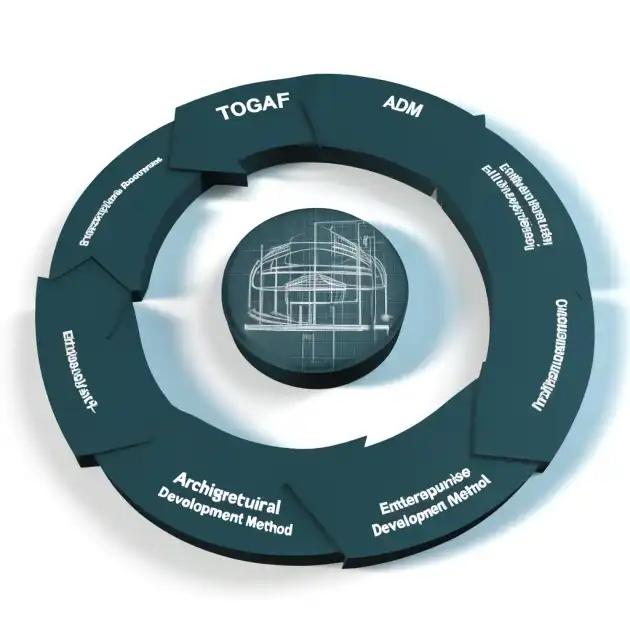TOGAF ADM - A Guide to Architectural Design Mastery
In the ever-evolving landscape of enterprise architecture, The Open Group Architecture Framework (TOGAF) stands as a beacon of structured methodology, guiding organizations towards efficient IT architecture development. At the heart of TOGAF lies the Architectural Development Method (ADM) - a meticulous process that empowers architects with the tools to design, manage, and implement enterprise architectures that align with business goals. Let's embark on a journey to unravel the intricacies of TOGAF ADM and explore its pivotal role in shaping the future of enterprise architecture.
What is TOGAF ADM?
TOGAF ADM is a proven, step-by-step approach to developing an enterprise architecture. It provides a comprehensive method for planning, designing, implementing, and managing an enterprise architecture, ensuring that all aspects of the architecture are cohesive and aligned with the organization's objectives.
The Phases of TOGAF ADM
TOGAF ADM is divided into eight distinct phases, each focusing on a specific aspect of architectural development:
Preliminary Phase: Establishes the architecture framework, defining the scope, principles, and methodologies to be used throughout the ADM cycle.
Phase A - Architecture Vision: Creates a high-level vision of the architecture, capturing the stakeholders' aspirations and setting the stage for detailed design.
Phase B - Business Architecture: Develops a detailed business architecture, outlining the organizational structure, business processes, and governance models.
Phase C - Information Systems Architectures:
Data Architecture: Defines the structure of the organization's logical and physical data assets.
Application Architecture: Designs the application systems needed to support the business architecture and their interactions.
Phase D - Technology Architecture: Identifies the hardware, software, and network infrastructure required to support the application architecture.
Phase E - Opportunities and Solutions: Analyzes the gaps between the current and desired states, identifying opportunities for improvement and potential solutions.
Phase F - Migration Planning: Develops a detailed plan for implementing the architectural changes, including timelines, resources, and milestones.
Phase G - Implementation Governance: Oversees the implementation of the architecture, ensuring that it remains aligned with the original vision and objectives.
Phase H - Architecture Change Management: Monitors the architecture for changes in the business environment and adapts the architecture as needed.
The Iterative Nature of TOGAF ADM
One of the key strengths of TOGAF ADM is its iterative nature. The method encourages continuous assessment and refinement of the architecture, allowing for flexibility and adaptability to changes in the business environment. This iterative approach ensures that the architecture remains relevant and aligned with the organization's goals.
The Benefits of TOGAF ADM
Adopting TOGAF ADM offers numerous benefits to organizations:
Alignment of IT and Business Goals: Ensures that the IT architecture supports and enhances the organization's business objectives.
Improved Decision-Making: Provides a structured framework for making informed decisions about IT investments and priorities.
Increased Efficiency: Streamlines processes and reduces redundancy, leading to cost savings and improved operational efficiency.
Enhanced Flexibility: Allows for quick adaptation to changes in the business environment, maintaining the relevance of the architecture.
Risk Mitigation: Identifies potential risks and develops strategies to mitigate them, ensuring the stability and security of the architecture.
Conclusion
TOGAF ADM is an indispensable tool for enterprise architects, offering a systematic approach to designing and managing architectures that drive business success. By embracing the principles of TOGAF ADM, organizations can navigate the complexities of the digital landscape with confidence, ensuring that their IT architecture is a robust foundation for growth and innovation.
